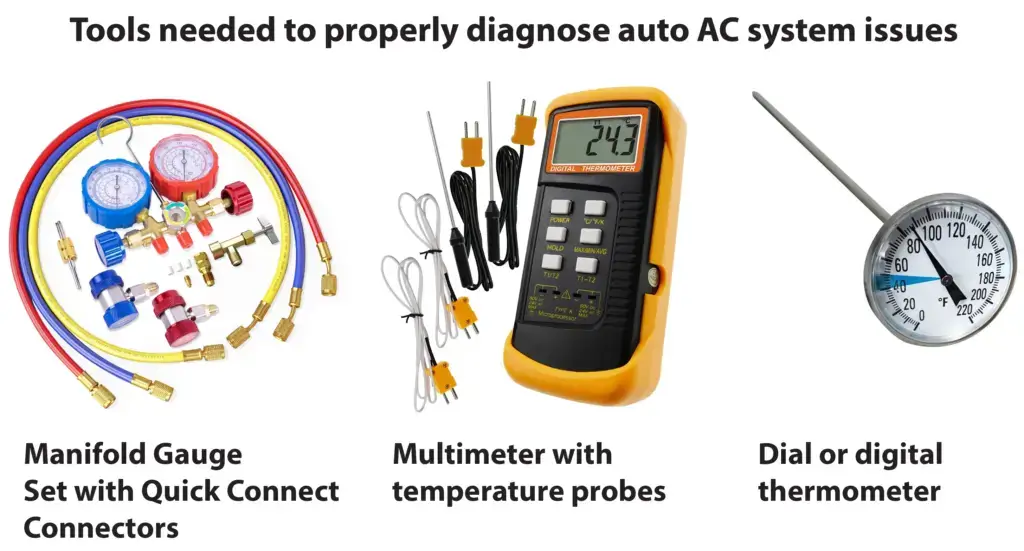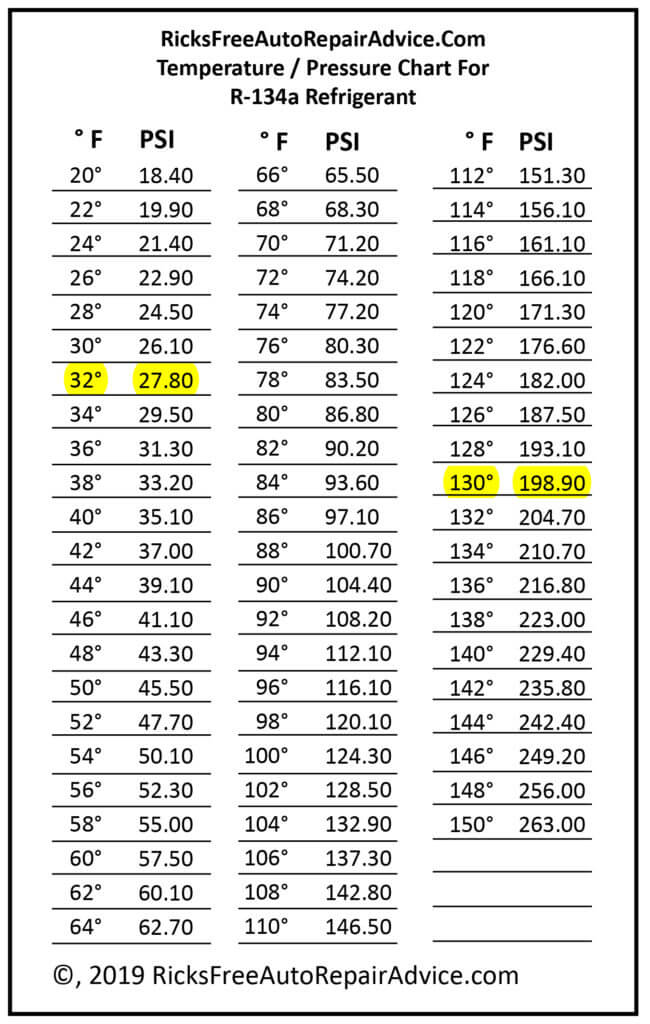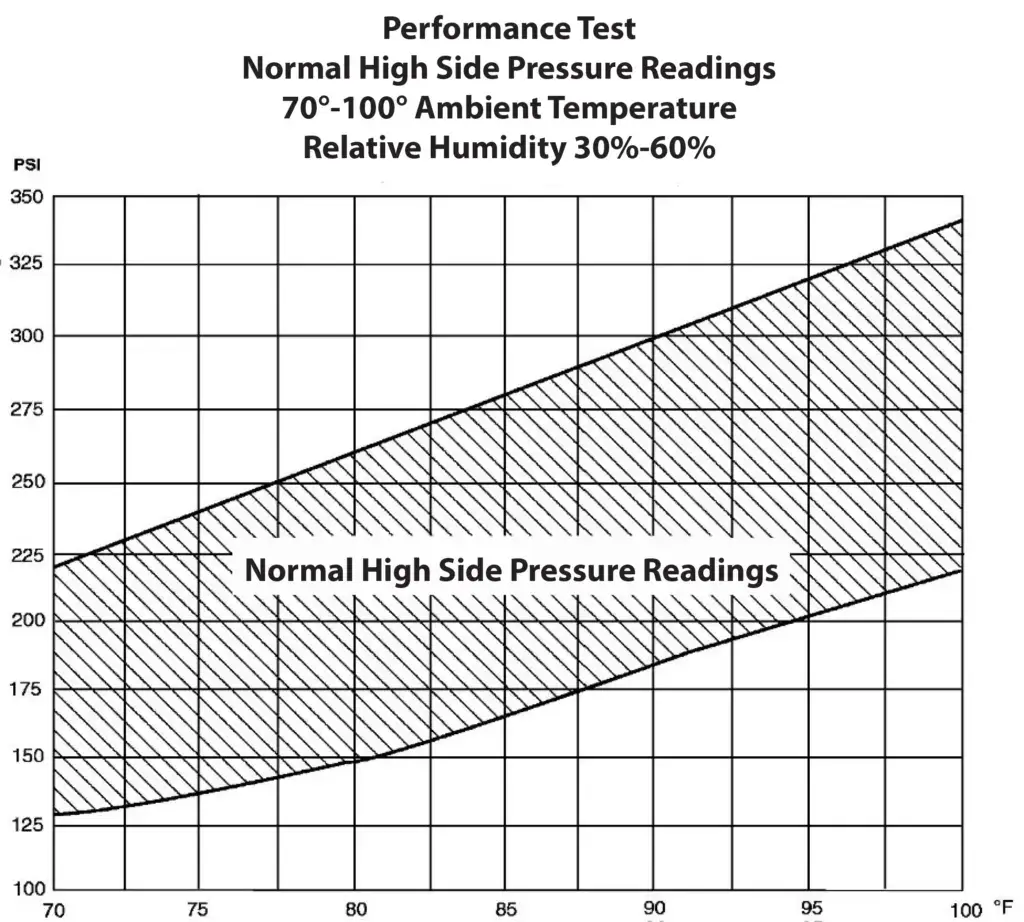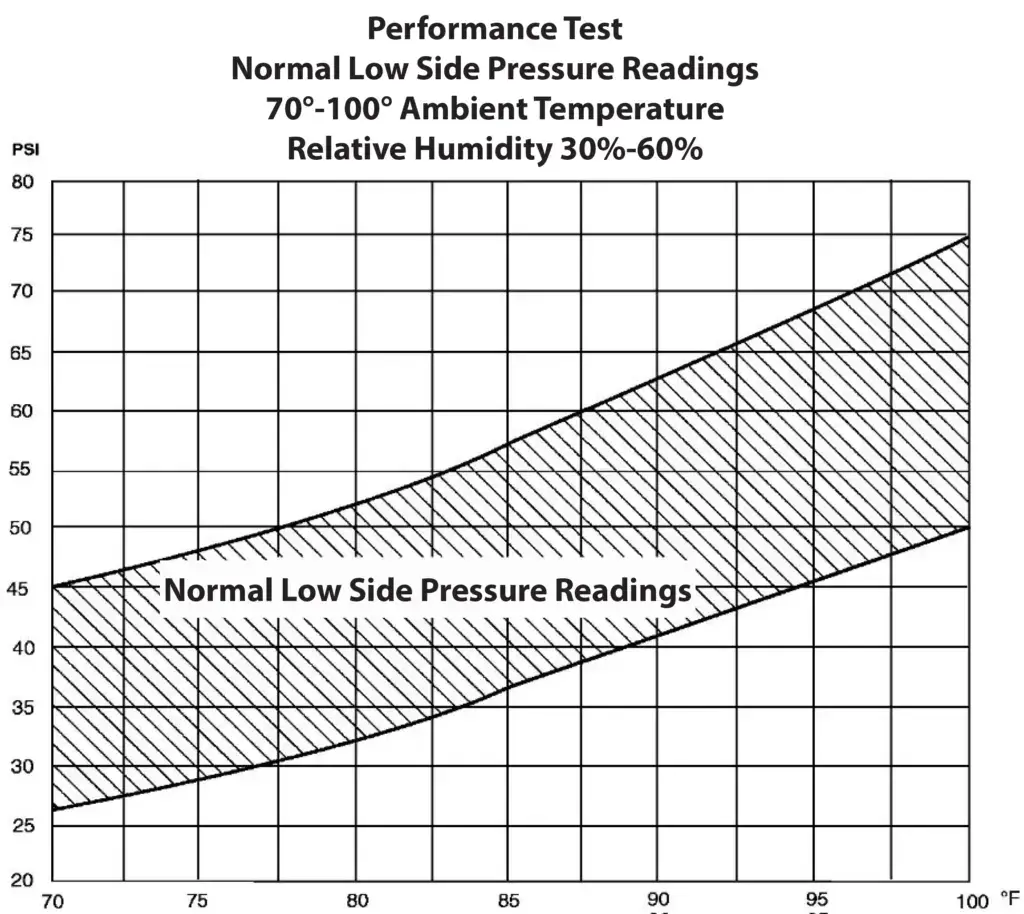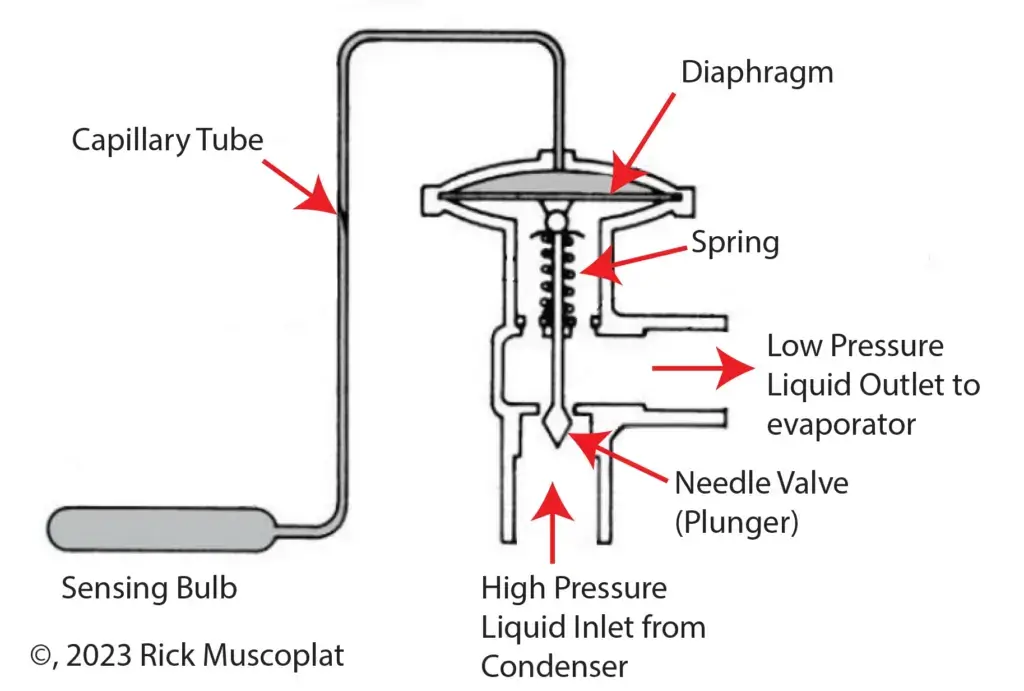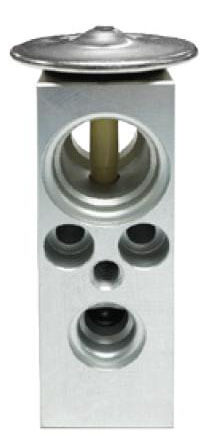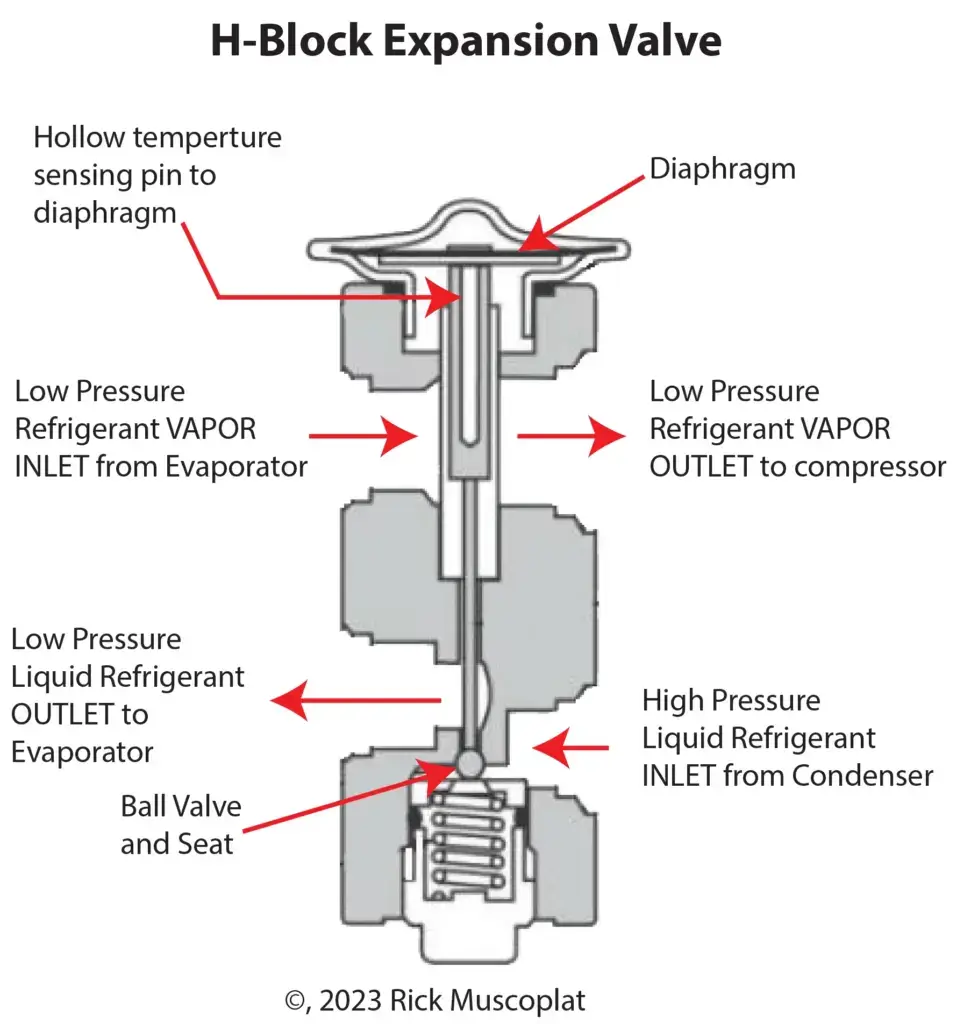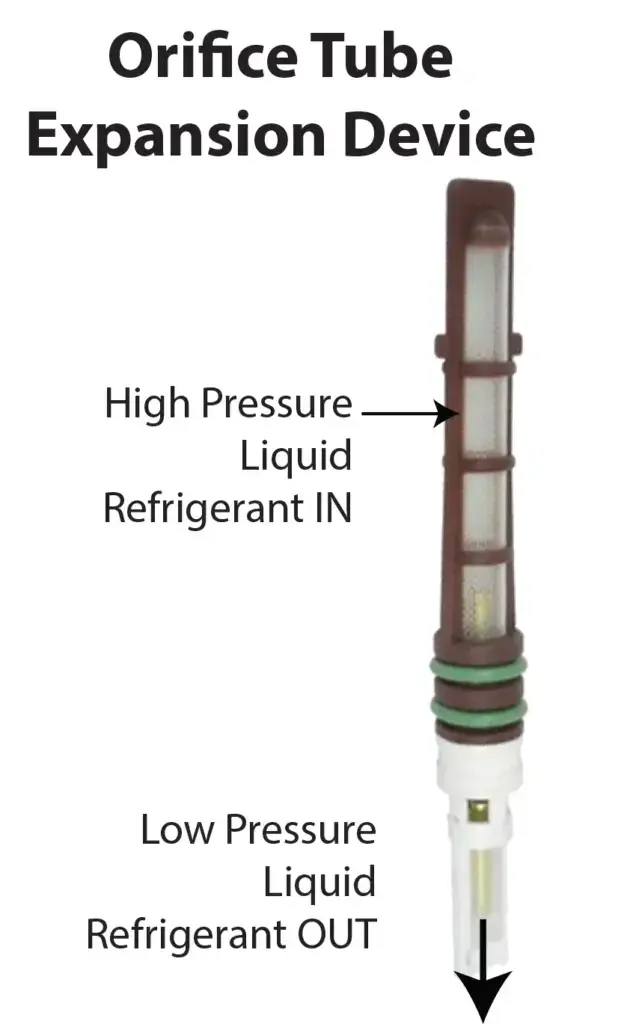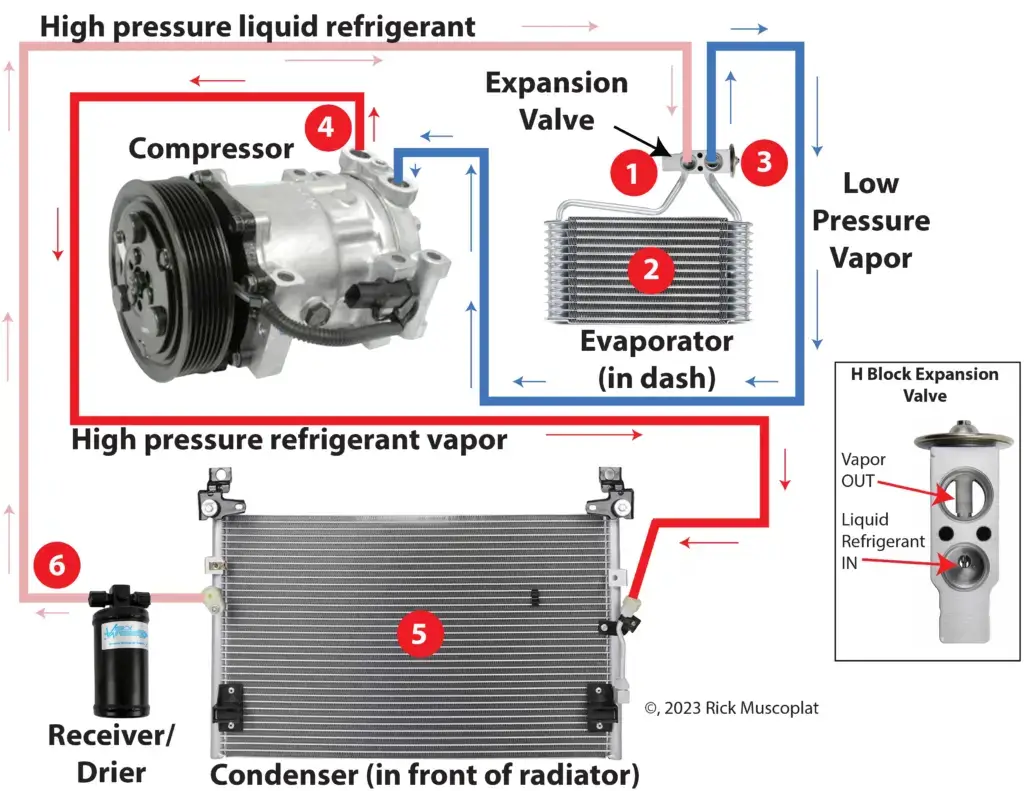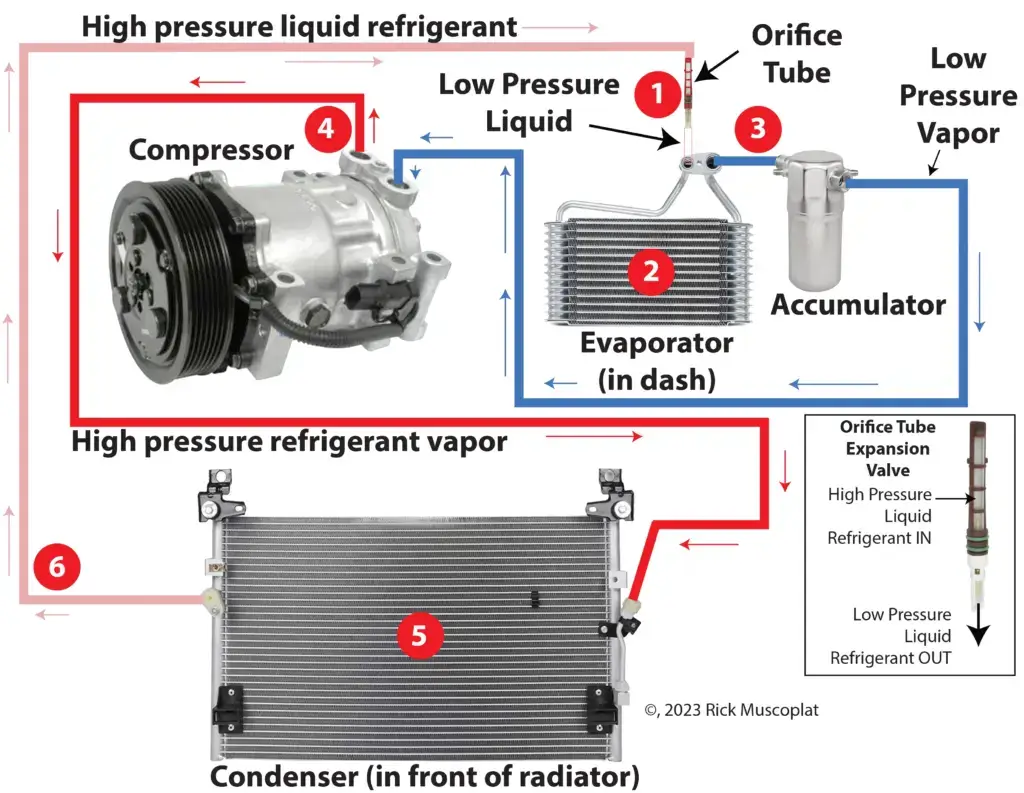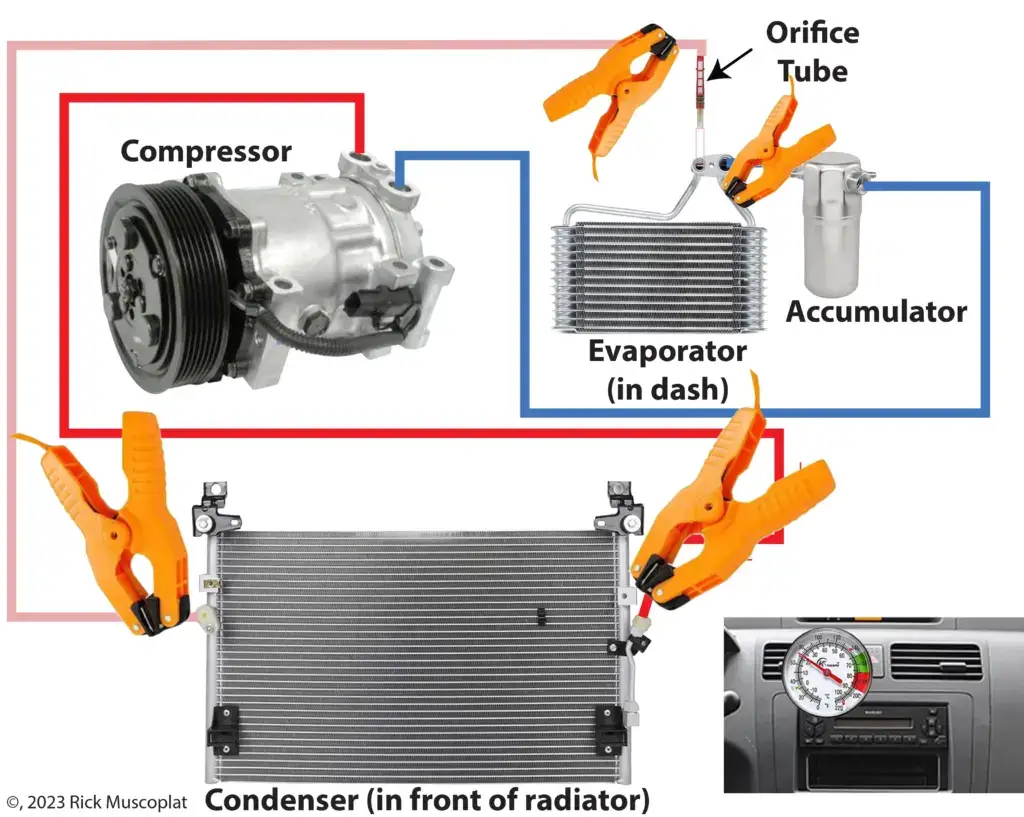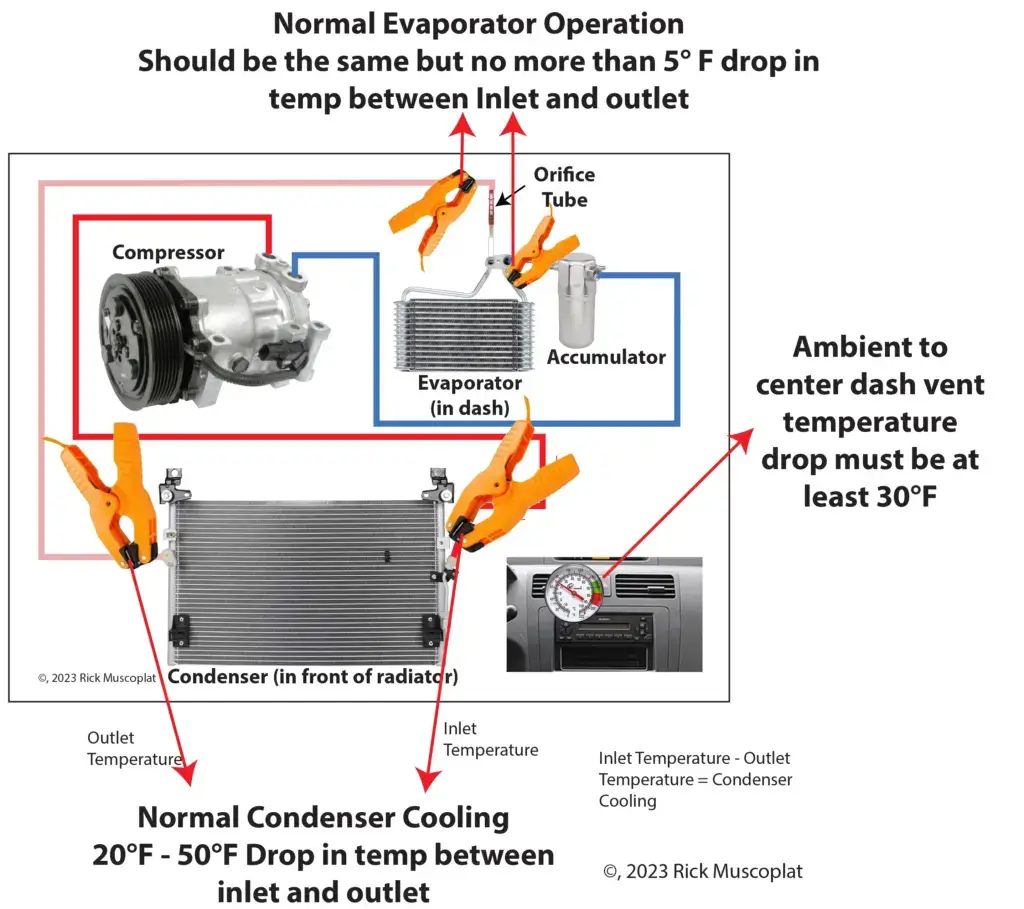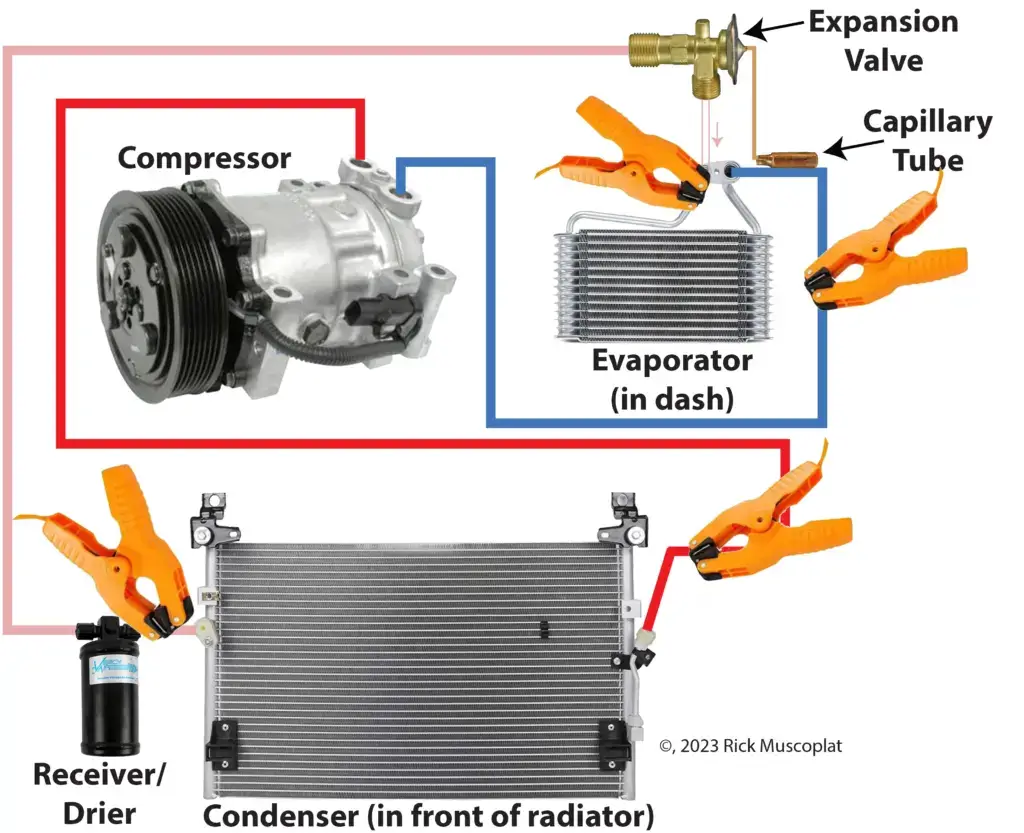Troubleshoot Your Car’s AC Like a Pro
Folow this step-by-step approach to troubleshoot your car’s AC
I’ll assume you’ve already added refrigerant to your car’s AC system and it still isn’t putting out cold air. So what’s next? Are you going to replace the compressor, expansion valve, or evaporator temp sensor? Stop! Don’t replace anything until you actually troubleshoot your car’s AC system.
Here are the tools you’ll need to troubleshoot your car’s AC problems professionally
You’re kidding yourself if you think you can diagnose car AC problems with just the gauge on a DIY recharging kit. At the very least, you need high and low side pressures, along with outside and center duct temperatures, and even then, you still don’t have the complete picture of your AC system’s condition.
If you’re willing to invest around $100 in tools, you can perform the same diagnostic tests the pros use. Here’s what you’ll need. If you own and can borrow a scan tool with live data, you can check the sensor reading right on the screen instead of having to connect your meter to the sensors.
• A manifold gauge set. You can buy one for as little as $40
• A multimeter with temperature probes
• A probe thermometer
What you’ll be testing to troubleshoot your car’s AC
1) High and low side pressure readings
You’ll use the gauge set to determine static (compressor not running ) and working pressures. However, pressure readings alone can’t definitively pin-point the source of the AC problems.
The condition testing and heat load tests in this article can pinpoint the exact cause of your AC problems.
2) External condenser condition, radiator fan operation, and condenser inlet and outlet temperatures
The condenser coil is located in front of the radiator, directly behind the grille. The condenser’s job is to remove heat from the refrigerant vapor, allowing the refrigerant vapor to condense back into a liquid.
Proper airflow across the condenser fins is critical to condenser operation. So you’ll be checking for clogged condenser fins due to dust, road debris, and bug buildup. You’ll also be checking for proper radiator fan operation. A dirty condenser or poor radiator fan operation can dramatically reduce AC cooling.
Proper vapor and liquid flow through the condenser passages is also critical to AC operation. The small internal passages can clog from deteriorated rubber hoses, metallic debris from a worn compressor, sludge buildup, or excessive oil.
A condenser can look fine from the outside and have good airflow but not remove enough heat to allow for proper condensation. The only way to definitively test the operation of the condenser is by conducting a heat load test using temperatures probes on the inlet and outlet tubes.
3) Checking for good airflow across the Evaporator and check inlet and outlet temperatures
The evaporator coil is located behind the dash, inside the heater box. The evaporator’s job is to remove heat and moisture from the cabin air. The evaporator doesn’t actually add cold to cabin air; it simply removes heat from the cabin air. Here’s how that happens: The orifice tube or expansion valve meters high-pressure liquid refrigerant into the evaporator coil. Hot cabin air blows across the coil, causing the low-pressure liquid refrigerant to absorb cabin heat, boil, and change into a low-pressure vapor.
4) Ambient temperature sensor and comparing ambient and cabin center duct temperature
Many vehicles have ambient temperature sensors. Some carmakers locate the sensor in front of the radiator, while others locate the sensor in the driver’s side view mirror (so it’s away from engine compartment heat). On most late-model vehicles, if the ambient temperature sensor is damaged or isn’t working, the AC WILL NOT WORK. If you have any front-end body damage, check for damage to the ambient temperature sensor. If you have a scan tool, check the reading for the ambient temperature sensor before doing anything else.
Also, by comparing ambient and cabin center duct temperatures, you’ll know exactly how much heat your car’s AC system is removing from the cabin air.
Step 1 — Troubleshoot your car’s AC problems using gauges and temp probe and record static pressure and ambient temperature
Static pressure is the refrigerant pressure with the engine and compressor off and the AC not running for at least 1 hour, so the high and low sides are equalized. The pressure/temperature chart can give you a rough idea of system charge.
• Attach high and low side connectors and note the pressures on both gauges.
• Measure the temperature in the engine compartment
• The pressures should be the same on both gauges. If they’re different, there’s a problem.
• The pressure must be above 40 psi. in order for the compressor to operate
• Static pressure alone is meaningless. You must correlate the static pressure reading with ambient temperature to get a rough idea of the system charge
What static pressure tells you
• System pressure is high enough for the compressor to operate
• If the system is significantly low on charge
• But never rely on static pressure alone to conclude that it has the correct charge.
Step 2 — Troubleshoot your car’s AC problems by checking for leaks with dye and a black light
If the static pressure test shows low refrigerant and the system has fluorescent dye in it, use a black light to locate any leaks. Fix the leaks. Then, evacuate the system, measure oil loss, replace lost oil, and recharge.
If the system doesn’t already have dye, inject dye. Drive for a week, and then use a black light to check for leaks. You can also rent a refrigerant “sniffer” tester and test for leaks that way.
Step 3 — Conduct a performance test
A performance test gives you a rough idea of how the system is performing using pressure readings, ambient temperature and ambient humidity readings, and center duct temperature. The exact set-up procedure differs by vehicle make, model, and year, so you must consult your vehicle’s shop manual.
Some carmakers want this test done with the doors and windows, while others want the doors and windows closed. The same applies to engine RPM during the test, as well as blower motor speed. There is no one-size-fits-all when it comes to performance testing.
Here is an example of the testing specs for a 2005 Ford Explorer
• Drive the vehicle or run the engine until it reaches normal operating temperature.
• Open all vehicle windows and leave the hood open for the test. Open the rear hatch and/or rear doors (if equipped).
• If the vehicle is equipped with auxiliary climate control, set the auxiliary controls to full COOL in the PANEL mode at HI blower speed.
• Set the climate controls.
For a manual system, set to AC controls to ON. Mode to DASH VENTS. Dash temp controls to FULL COLD. Recirculation set to FRESH AIR. Blower set to HIGH speed.
For Automatic Temperature Systems, set the AC to ON., If the vehicle has an A/C switch or compressor on switch, set it to A/C ON. Set the temperature to 60°F. If the vehicle has dual-function temp controls, disable the dual function. Set the blower to HIGH speed. Recirculation set to FRESH AIR.
• Start the engine. Ensure the compressor is running. Allow the vehicle to run at idle speed until the suction (low-side) and discharge (high-side) pressures are stable or fluctuate in a range that repeats.
• Record the ambient (shop) temperature.
• Record the discharge pressure. If the pressure is fluctuating, record the average value.
What did the performance test tell you?
It tells you whether system pressures are within normal limits. If the pressures are outside normal limits, consult the symptom charts in the shop manual.
Here are some examples of what you’ll find in the symptom charts
• If high and low side pressures are too high, you may have inadequate airflow across the condenser
• If the high side is too high but the low side is normal, you may have a refrigerant overcharged or air in the system
• High side pressure is low, and the low side is low, or compressor is cycling, you may have a low refrigerant charge, the AC suction line partially restricted or plugged, AC cycling switch sticking
Confused? Yeah. Lot’s of possibilities. So how can you narrow it down positively? By conducting heat load tests.
Step 4 — Troubleshoot your car’s AC by conducting a heat load test to pinpoint the source of the problem
The procedures for conducting heat load testing vary based on the type of expansion device your system uses.
All AC systems work by metering high pressure liquid refrigerant into the evaporator coil. But the metering device type varies by car maker and model year. Testing is based on the type of expansion valve.
If you know which types your vehicle uses, skip down to the testing procedure for your expansion device. Otherwise, read the descriptions, view the images and determine the type used in your vehicle.
Here are the types:
Capillary tube expansion valve
This expansion valve incorporates a metering 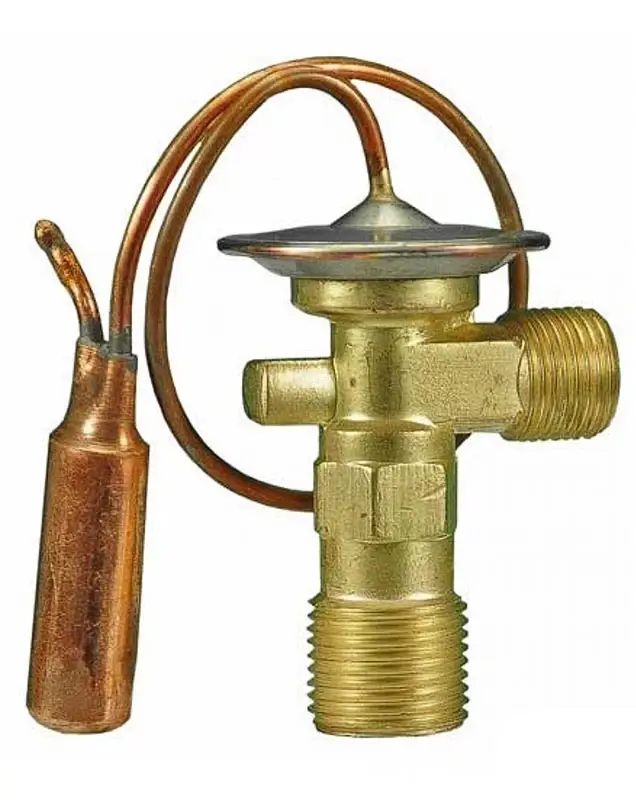 plunger connected to a diaphragm encased in a sealed chamber with a refrigerant gas on one side of the diaphragm. A tube filled with the same refrigerant leads from the top of the chamber to a sensing bulb attached to the outlet of the evaporator. As warmed refrigerant leaves the evaporator coil, the heated outlet tubing warms the sensing bulb. The refrigerant in the bulb boils, increasing pressure at the top of the sealed chamber, causing the plunger to allow more liquid refrigerant into the evaporator. The additional refrigerant causes evaporator outlet temperature to drop, which reduces boiling and pressure in sensing bulb. The reduced pressure causes the diaphragm to relax and shut off refrigerant flow to the evaporator coil.
plunger connected to a diaphragm encased in a sealed chamber with a refrigerant gas on one side of the diaphragm. A tube filled with the same refrigerant leads from the top of the chamber to a sensing bulb attached to the outlet of the evaporator. As warmed refrigerant leaves the evaporator coil, the heated outlet tubing warms the sensing bulb. The refrigerant in the bulb boils, increasing pressure at the top of the sealed chamber, causing the plunger to allow more liquid refrigerant into the evaporator. The additional refrigerant causes evaporator outlet temperature to drop, which reduces boiling and pressure in sensing bulb. The reduced pressure causes the diaphragm to relax and shut off refrigerant flow to the evaporator coil.
H-block Expansion Valve
The H-block expansion valve works much like
the capillary tube valve, except that it doesn’t use a remote sensing bulb. It’s mounted on the outlet of the evaporator and directly senses the temperature of the refrigerant leaving the evaporator. A hollow rod runs through the center of the vapor port and transfers that exiting vapor temperature up to the diaphragm. As the temperature changes, the diaphragm moves up and down with moves the ball valve off its seat metering liquid refrigerant into the evaporator.
Fixed Orifice tube and Variable Orifice tube expansion devices
As the name implies, a fixed orifice tube is a liquid metering device with a fixed tube diameter. A variable orifice tube contains a temperature sensitive spring and needle valve that varies the amount of liquid refrigerant flow through the tube.
The orifice tube can be located in the inlet to the evaporator or in the high pressure liquid line. High pressure liquid refrigerant enters orifice tube through the screen filter and exits the tube as low pressure liquid. Orifice tubes are color coded according to the tube diameter which can vary from .067″ – .047″.
How each expansion device system works
How a capillary tube expansion valve car AC system works
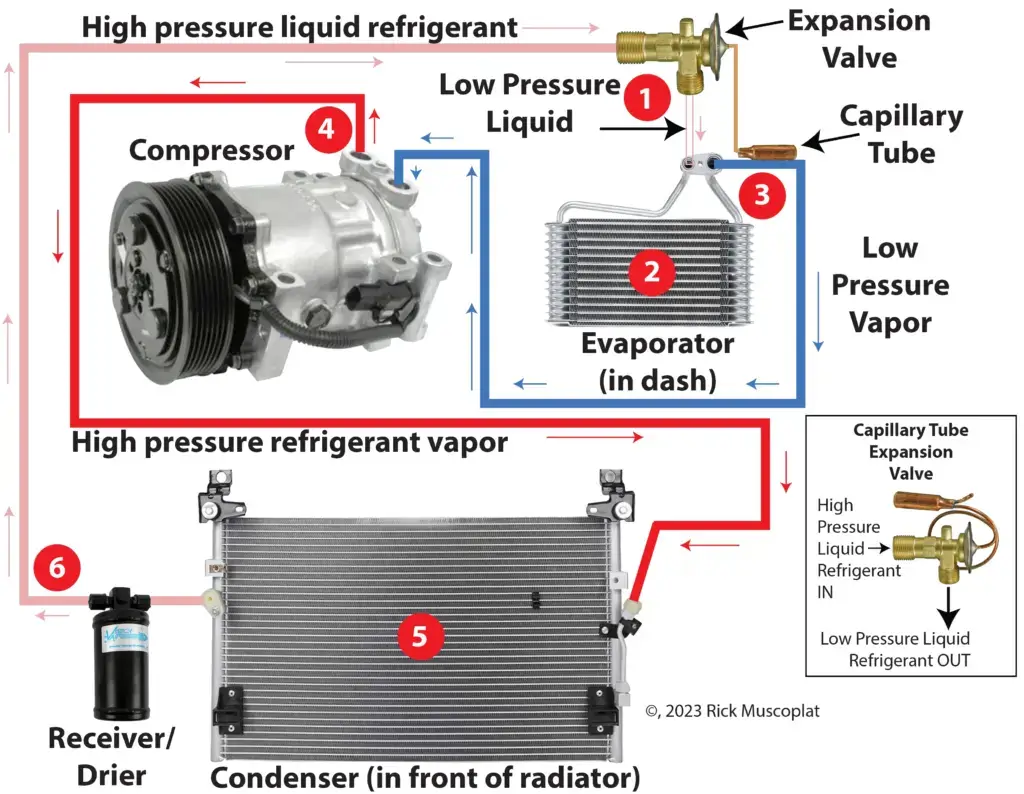
1) High pressure liquid refrigerant enters the capillary tube expansion valve. Based on the temperature at the sensing bulb attached to the evaporator outlet, the expansion valve meters the correct amount of liquid refrigerant into the evaporator. The refrigerant leaves the expansion valve as a low pressure liquid.
2) The liquid refrigerant fills the evaporator and absorbs the heat from the cabin air as the air flows across the evaporator fins. The absorbed heat causes the refrigerant to change from a liquid to a vapor (gas).
3) The refrigerant vapor leaves the evaporator and is sucked into the compressor.
4) The compressor converts the low pressure vapor into a high pressure vapor, causing it to heat up.
5) The heated high pressure vapor enters the condenser and is cooled by airflow across the condenser fins. Heat is removed from the vapor and it condenses into a high pressure liquid.
6) The high pressure liquid refrigerant flows into the receiver/drier where a desiccant bag removes any moisture from the liquid.
How an H-Block Expansion valve car AC system works
How an Orifice Tube Expansion device car AC system works
1) High pressure liquid refrigerant enters the orifice tube through the screen mesh. The liquid refrigerant flows through the open orifice tube and into the evaporator, changing from a high pressure liquid to a low pressure liquid as it leaves the orifice tube.
2) The liquid refrigerant fills the evaporator and absorbs the heat from the cabin air as the air flows across the evaporator fins. The absorbed heat causes the refrigerant to change from a liquid to a vapor (gas).
3) The refrigerant vapor leaves the evaporator and enters the accumulator.
4) The compressor can only compress gas. If any liquid refrigerant enters the compressor, it can destroy the compressor. So the accumulator collects any liquid that may have left the evaporator and allows it to evaporate into a vapor before entering the compressor. The accumulator contains a desiccant to remove any moisture in the refrigerant.
4) The compressor converts the low pressure vapor into a high pressure vapor, causing it to heat up.
5) The heated high pressure vapor enters the condenser and is cooled by airflow across the condenser fins. Heat is removed from the vapor and it condenses into a high pressure liquid.
6) The high pressure liquid refrigerant flows into the receiver/drier where any moisture is removed from the liquid.
Conduct a heat load test on an orifice tube AC system
Conditions for testing
• Engine at normal operating temp and idle speed.
• Doors open.
• Set to MAX AC.
• Set Blower to High .
• Note ambient temp and humidity.
• Place a dial thermometer in center dash vent
• Clean the condenser and evaporator inlet and outlet tubes using a scrubby pad to ensure good contact with the temperature probes.
• Run AC for 10-mins prior to measuring temperatures using the probes
Where to place the temperature probes/clamps
Test temperature at the evaporator: Before the orifice tube and the outlet tube before it enters the accumulator.
Test temperature at the condenser at the inlet and outlet
If the condenser temperature drop is out of normal range
If the condenser inlet-to-outlet temperature is more than 50° F
• System undercharged
• Excessive air in system
• Condenser tubes plugged
If the condenser inlet-to-outlet temperature less than 20° F
• System is overcharged
• The condenser air fins plugged OR
• The radiator fans aren’t working properly
• There’s debris between the condenser and the radiator
If the evaporator readings are out of normal range
If the evaporator outlet pipe is more than 5° F warmer than the inlet
• System undercharged and the refrigerant is picking up superheat
• Excessive oil charge
• Restricted orifice tube
If the evaporator outlet pipe is more than 5° F colder than the inlet pipe
• System overcharged
• Orifice tube O-ring not sealing
Condenser and evaporator temperatures are in normal range but ambient-to-vent temperatures don’t drop by 30°F
• Blend door or heater control valve not functioning properly
• Recirculation/outside air door faulty
• Evaporator internal restrictions
• Excessive oil in system
• Air in system
• Evaporator air fins plugged
Conduct a heat load test on an expansion valve AC system
Conditions for testing
• Engine at normal operating temp and idle speed.
• Doors open.
• Set to MAX AC.
• Set Blower to High .
• Note ambient temp and humidity.
• Place a dial thermometer in center dash vent
• Clean the condenser and evaporator inlet and outlet tubes using a scrubby pad to ensure good contact with the temperature probes.
• Run AC for 10-mins prior to measuring temperatures using the probes
NOTE: You can’t test the temperature drop between the inlet and outlet tubes on an H-block expansion valve system. There’s no room for the probes. You can only test the inlet/outlet temperatures on a capillary tube expansion valve system.
Where to place the temperature probes/clamps
Test the evaporator inlet temperature AFTER the expansion valve.
Test temperature at the condenser at the inlet and outlet before the receiver/drier.
If the temperature difference between condenser inlet and outlet is less than 20°F here are the possible causes:
• The system is overcharged
• Poor airflow across the condenser coil.
• Debris clogging the coil fins. Clean the condenser coil.
• Improper airflow across condenser. Check for proper condenser fan operation (if electric) or fan clutch operation if mechanical radiator fan is used.
• Check for broken or missing fan shrouds or seals
If the temperature difference between condenser inlet and outlet reading is more than 50°F here are the possible causes:
• There’s air in the system. Evacuate and pull a vacuum for at least 45-mins.
• The system is low on charge.
• Restriction in condenser coil—sludge, too much oil, mechanical restriction due to pinched tube
©, 2023 Rick Muscoplat
Posted on by Rick Muscoplat
